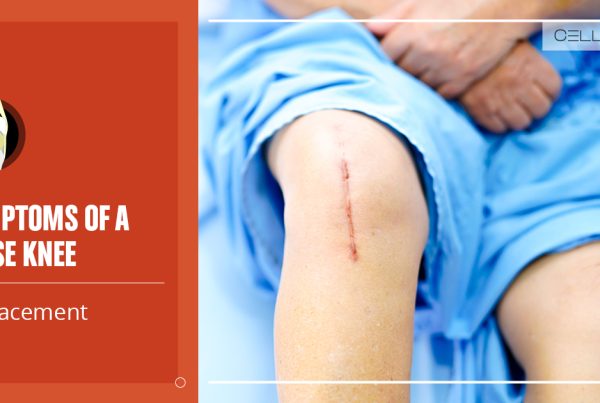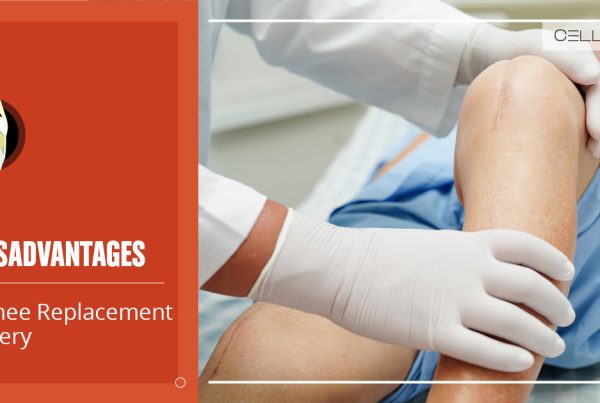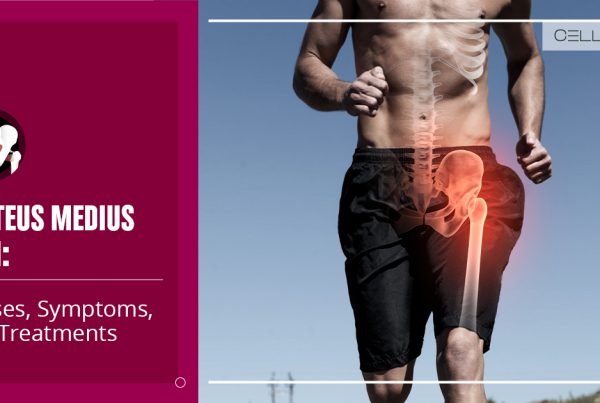Published on: January 4, 2023 | Updated on: August 29, 2024
Meniscal tear is a common knee injury that involves severe damage to the cushioning cartilage that protects the knee joint. It can result from injury or any activity (pivoting, squatting, etc.) that causes knees to twist aggressively. It leads to persistent knee pain and the inability to move.
Although a meniscal tear typically heals within 6 to 8 weeks, it can sometimes take weeks to recover completely. Additionally, the inflammation that results from injury puts you at risk of developing osteoarthritis.
While OTC pain relievers are used medically, here are seven methods for alternative treatment for a meniscus tear that offer symptomatic relief and increase healing.
1. Rest
Prolonged rest is the mainstay of treatment for meniscus tears. To fix the damaged ligaments and cartilage, doctors advise avoiding any activities that can potentially put a strain on your knees.
Specific exercises like pivoting and deep squatting can worsen the pain and therefore. It should be avoided for at least four weeks following the injury.
Even when walking, you must use a cane on the side of the injured leg, as it relieves pressure on the knees.
2. Icing
Icing is a helpful alternative treatment for a meniscus tear and other swelling conditions. Applying ice causes soft tissue around the bones to press against the veins. The low temperature reduces blood flow by decreasing vein dilation. This, in turn, lowers the amount of fluid leaking into the knees, thus helping with swelling.
Generally, doctors recommend applying an ice cube (directly or wrapped in a thin cloth on the damaged knee) for 15 minutes at every 4-hour interval.
3. Exercise
While rest is initially advised in meniscus tear injury, you must also exercise to ensure your knees don’t lose mobility. Here are some of the best exercises you can try as an alternative treatment for meniscus tears:
Mini-Squats
Meniscus tear exercises primarily involve training your quadriceps (muscles at the front of your thighs). Mini-squats are a great workout that engages your quadriceps without putting excessive strain on your knees.
Position yourself on a leveled ground, with your feet apart (by about shoulder-width). Bring your buttocks towards your thighs, and only slightly bend your knees in the process. Hold the squat for as long as possible, gently bring yourself back to the original position, and repeat.
In contrast with regular squats, stop at about 15 degrees of bend to avoid hurting your knees. For better positioning and stability, you can take support against the wall.
Clams
Clams involve lying on your injured site, with your hips and feet resting on one another. To engage your gluteus muscles, bend your knees at 45 degrees.
Slowly raise your top knee as much as possible without moving your feet and arms. Slowly return your knees to the original position, and repeat ten times. Do at least three sets a day.
Leg Extensions
You are sitting on a chair with your feet flat on the floor to do leg extensions. Lift your right leg and hold it straight, off the ground, until you can. Slowly lower the foot and repeat the same on the other leg. Do at least ten reps.
Hamstring Curls
The hamstrings are a group of muscles on the back of your thighs. On a leveled floor, lie on your stomach. Straighten your legs, and rest your forehead on your arms. Lift the foot of your injured knee and slowly bring it towards your buttocks. Hold it in position for 30 seconds to a minute, and then get it back down to the floor. Repeat the same at least ten times.
Standing Heel Raises
Standing heel raises is an exercise for your calf muscles. Stand with your feet hip-width apart. Rest your hands on a counter, slowly lift your heels off the floor, and extend them as much as possible. Afterward, slowly lower your heels back down. Do ten reps and at least three sets a day.
4. Cannabidiol
Cannabidiol, or CBD, is an active component of hemp plants. It is extracted from cannabis and is widely used as tablets and oils.
CBD is packed with therapeutic chemicals, which enable its dramatic anti-inflammatory action. As an alternative treatment for meniscus tears, CBD reduces swelling, tenderness, stiffness, and general joint strength.
These effects are achieved by the activation of chemicals called endogenous cannabinoids. Anandamide is our body’s natural cannabinoid, and its disintegration is associated with the exacerbation of pain and inflammation in meniscus tears and other bone conditions.
CBD preserves anandamide, i.e., prevents its rapid disintegration. It also controls and modulates endorphins (feel-good chemicals that work on alleviating pain). This promotes healing and is essential in preventing complications that may arise from a meniscus tear.
CBD is readily available across the country for topical application and oral intake. It does not cross the blood-brain barrier (a central nervous system component). This implies that it does not cause addiction, unlike opioid-containing pain meds that may lead to drug abuse.
Additionally, no significant side effects have yet been reported from the use of CBD. Many people suffering from chronic back pain due to arthritis and other conditions reported improvement in symptoms and complete relief after using CBD.
However, mentioning that the FDA hasn’t yet approved CBD is essential. This puts you at risk of consuming impure CBD products mixed with potentially harmful components. Therefore, it is better to do complete research and look for reviews of a seller and their products.
5. Natural Supplements and Herbs
Natural supplements and herbs are the foundation of Ayurvedic medicine. Here’s what can help as an alternative treatment for meniscus tears:
- Aloe vera. Aloe vera contains anthraquinone, which has anti-inflammatory properties.
- Turmeric. Turmeric contains curcumin, which is anti-inflammatory. It blocks an inflammatory enzyme, cyclooxygenase-2 (COX-2), thereby decreasing pain and swelling in arthritis.
- Fish Oil. Fish oil is rich in essential fats like Omega-3 and Omega-6 that regulate inflammation and prevent white blood cell aggravation, thus improving swelling.
- Glucosamine and Chondroitin. These two are chemicals naturally present in the body (at the joint level), and their loss is associated with inflammation, pain, and weakening of bones. These chemicals are extracted from animals and packaged as pills to help heal bone injuries and diseases.
6. Cell-Based Therapy
Introduced in the 19th century, cell-based therapy (stem cell therapy) has recently become mainstream. With a success rate of 80%, stem cell therapy has helped heal many conditions that involve failure to renew damaged body cells.
In cartilage and other bone diseases, aggressive inflammation impairs the body’s ability to form new healthy cells to replace the damaged /dead ones. This is where regenerative medicine comes in.
Here are the two main techniques via which stem cells are extracted for transplant:
- MMAT. MMAT, or Minimally Manipulated Adipose Tissue, involves collecting healthy adipose tissue and transplanting it to the diseased site to regenerate the meniscus and healthy joints. It is called “minimal” because very little fatty tissue is excised, which does not affect the natural cushioning of body fat.
- BMAC. In BMAC or Bone Marrow Concentrate, doctors extract healthy bone marrow (rich in stem cells) to treat musculoskeletal disorders like arthritis.
It is essential to mention that the transplant cells are preferably extracted from the patient’s body to avoid graft vs. host disease risk.
7. Platelet-Rich Plasma Therapy (PRP) Injections
Platelets are components of our blood. They are essential as the first defense against pathogens and pathological processes. Two mechanisms achieve this:
- Platelets form fibrin clots (platelet plugs) that modulate the inflammatory response. They prevent the movement of cells like leukocytes, reducing the aggressive inflammation characteristic of a meniscal tear.
- Platelets also release ten growth factors that regenerate damaged cells.
- They also attract healthy cells in the patient’s blood
Platelet-rich plasma therapy involves taking a patient’s blood, isolating platelets from it, and reinjecting those platelets at the damaged site. As an alternative treatment for meniscal tears, PRP effectively limits inflammation and promotes healing, thus reducing the risk of osteoarthritis and other associated complications.
CELLAXYS is a renowned clinic that prides itself on its team of expert physicians and state-of-the-art equipment. Several patients in our outpatient department have benefited from cell-based therapy and platelet-rich plasma injections.
After consultation and a detailed evaluation of your history and symptoms, doctors walk you through both procedures’ pros, cons, and estimated effectiveness. This helps decide which technique (PRP or cell-based therapy) is best as an alternative treatment for a meniscus tear in your case.
Sources
Footnotes
- Verdonk R. Alternative treatments for meniscal injuries. The Journal of Bone and Joint Surgery. British volume. 1997;79(5):866-73.
- Khan NT. Curcumin a known anti-inflammatory and antioxidant agent. International Journal of Molecular Biology. 2019;4(1):24-5.
- Katz JN, Brophy RH, Chaisson CE, De Chaves L, Cole BJ, Dahm DL, Donnell-Fink LA, Guermazi A, Haas AK, Jones MH, Levy BA. Surgery versus physical therapy for a meniscal tear and osteoarthritis. New England Journal of Medicine. 2013;368(18):1675-84.
- Li J, Zhu W, Gao X, Li X. Comparison of arthroscopic partial meniscectomy to physical therapy following degenerative meniscus tears: a systematic review and meta-analysis. BioMed Research International. 2020;2020.
- AlMukhtar SA, Al-Muktar S. The Role of Glucosamine Chondrotin Sulfate in the Treatment of Osteoarthritis of Knee. AL-Kindy College Medical Journal. 2013;9(1):100-9.
References
- Nonsurgical Treatments for Meniscus Tears. NYU Langone Hospitals. Accessed 9/14/2023.
- Guide to Meniscus Tear Treatments. Center for Orthopaedic Surgery and Sports Medicine. Accessed 9/14/2023.
- Meniscus Tear Knee Injury. WebMD. Accessed 9/14/2023.
CELLAXYS does not offer Stem Cell Therapy as a cure for any medical condition. No statements or treatments presented by Cellaxys have been evaluated or approved by the Food and Drug Administration (FDA). This site contains no medical advice. All statements and opinions are provided for educational and informational purposes only.
Dr Pouya Mohajer
Author
Pouya Mohajer, M.D. is the Director of Spine and Interventional Medicine for CELLAXYS: Age, Regenerative, and Interventional Medicine Centers. He has over 20 years of experience in pain management, perioperative medicine, and anesthesiology. Dr. Mohajer founded and is the Medical Director of Southern Nevada Pain Specialists and PRIMMED Clinics. He has dedicated his career to surgical innovation and scientific advancement. More about the doctor on this page.
Dr Pejman Bady
Contributor
Dr. Pejman Bady began his career over 20 years ago in Family/Emergency Medicine, working in fast-paced emergency departments in Nevada and Kansas. He has served the people of Las Vegas as a physician for over two decades. Throughout this time, he has been met with much acclaim and is now the head of Emergency Medical Services in Nye County, Nevada. More about the doctor on this page.









